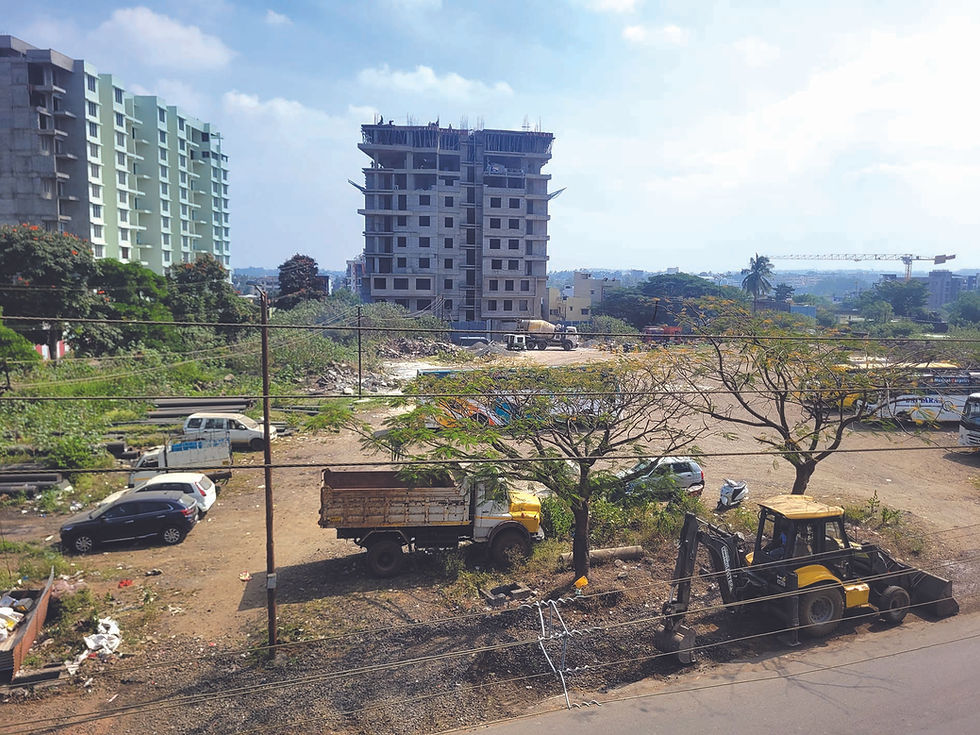The Race for the BJP’s Next ‘Pradhan’
- Rahul Gokhale

- 3 hours ago
- 3 min read

The dust has barely settled on Bihar’s assembly election, but within the Bharatiya Janata Party (BJP) the contest that truly matters has quietly begun. Nitish Kumar is back in the Chief Minister’s chair, the National Democratic Alliance (NDA) has been revived with fresh confidence and Prime Minister Narendra Modi has already shifted his gaze eastward, declaring West Bengal the next great battleground. Beneath the roar of victory, is a more consequential question: who will lead the BJP itself?
The term of the party’s national president, J.P. Nadda, formally ended in January 2023. Since then, extensions have carried him through the 2024 general election and beyond, stretching his tenure to nearly six years or effectively two full terms. The election for his successor has been postponed for two and a half years. Union Defence Minister Rajnath Singh recently hinted that a new party president would be chosen after the Bihar verdict. Now that verdict is in, expectations have sharpened.
Top Contenders
Bihar matters not merely as another state election, but as a showcase of organisational craft. Two figures at the heart of the BJP’s Bihar campaign - Dharmendra Pradhan and Vinod Tawde - have emerged as the leading contenders for the top post.
Tawde, a former Maharashtra minister and seasoned organisational hand, is widely credited with operating behind the scenes to engineer Nitish Kumar’s return to the NDA ahead of the 2024 Lok Sabha elections after the Bihar leader’s brief but consequential defection to the Rashtriya Janata Dal in 2022. That political homecoming reshaped the arithmetic of the national alliance. Tawde’s reputation as a backroom operator was further burnished in Haryana last year, where the BJP surprised many by securing a majority on its own. The strategy, seat management and coalition arithmetic bore his imprint.
Pradhan’s performance in Bihar has been more visible and perhaps more decisive. Appointed as BJP in-charge for the state last September, he arrived under a cloud of scepticism. With limited time to plan and an OBC identity that some saw as a mere nod to caste equations, expectations were cautious. Instead, he ran the campaign with methodical quietude. From prioritising issues and shaping the message to choreographing the Prime Minister’s rallies, from pacifying internal rebels to smoothing relations with NDA partners, Pradhan’s hand was evident at every seam of the campaign.
Pradhan’s rise has been built on a string of calculated bets. It was he who first argued that the BJP should break formally from the Biju Janata Dal in Odisha and contest independently - a move that many initially regarded as reckless. Last year, the gamble paid off handsomely when the BJP captured power in the state on its own. Earlier still, in the 2017 Uttarakhand elections, Pradhan and Nadda, as joint in-charges, steered the party to a comfortable majority. Few leaders in today’s BJP can boast such a consistent record of reading the political weather.
Organisational competence is not the only currency in the contest for the presidency. The post is also an ideological trust. Despite the BJP’s growing openness to inducting leaders from rival parties at every level, the Rashtriya Swayamsevak Sangh (RSS), its ideological fountainhead, still prefers its national president to be a product of the Sangh ecosystem. On this score, both front-runners fit the bill. Pradhan and Tawde cut their political teeth in the Akhil Bharatiya Vidyarthi Parishad (ABVP), the RSS’s student wing.
Educated, articulate and relatively young by BJP standards, Pradhan is unburdened by major personal controversies. His years as Union petroleum minister from 2014 saw him oversee the politically potent Ujjwala Yojana, which brought cooking gas connections to tens of millions of poor households and became one of the Modi government’s most effective welfare-political hybrids. His lineage, too, reassures traditionalists: his father, Debendra Pradhan, was a minister in Atal Bihari Vajpayee’s cabinet.
Tawde’s résumé is weighty, but his liabilities are harder to ignore. He is over 60, and questions over his educational credentials have periodically surfaced. During last year’s Maharashtra assembly elections, he found himself entangled in a controversy over alleged cash distribution at a hotel in Virar. Earlier, the BJP suffered acute embarrassment in the Chandigarh mayoral election of 2024, where the Supreme Court overturned the party’s tainted victory and declared the Aam Aadmi Party candidate the winner. Tawde had been entrusted with strategy there too.
The name of Bhupendra Yadav, the powerful general secretary and a former ABVP activist, too was floated about. But he has since been tasked with overseeing the BJP’s campaign for the 2026 West Bengal assembly election, this effectively removes him from immediate consideration for the national presidency.
As the BJP prepares to choose the organisational custodian of its next electoral decade, it is not known yet whether that custodian will, quite literally, be a ‘Pradhan.’ But the answer, insiders suggest, is now closer than ever.
(The writer is a political commentator based in Pune.)





Comments